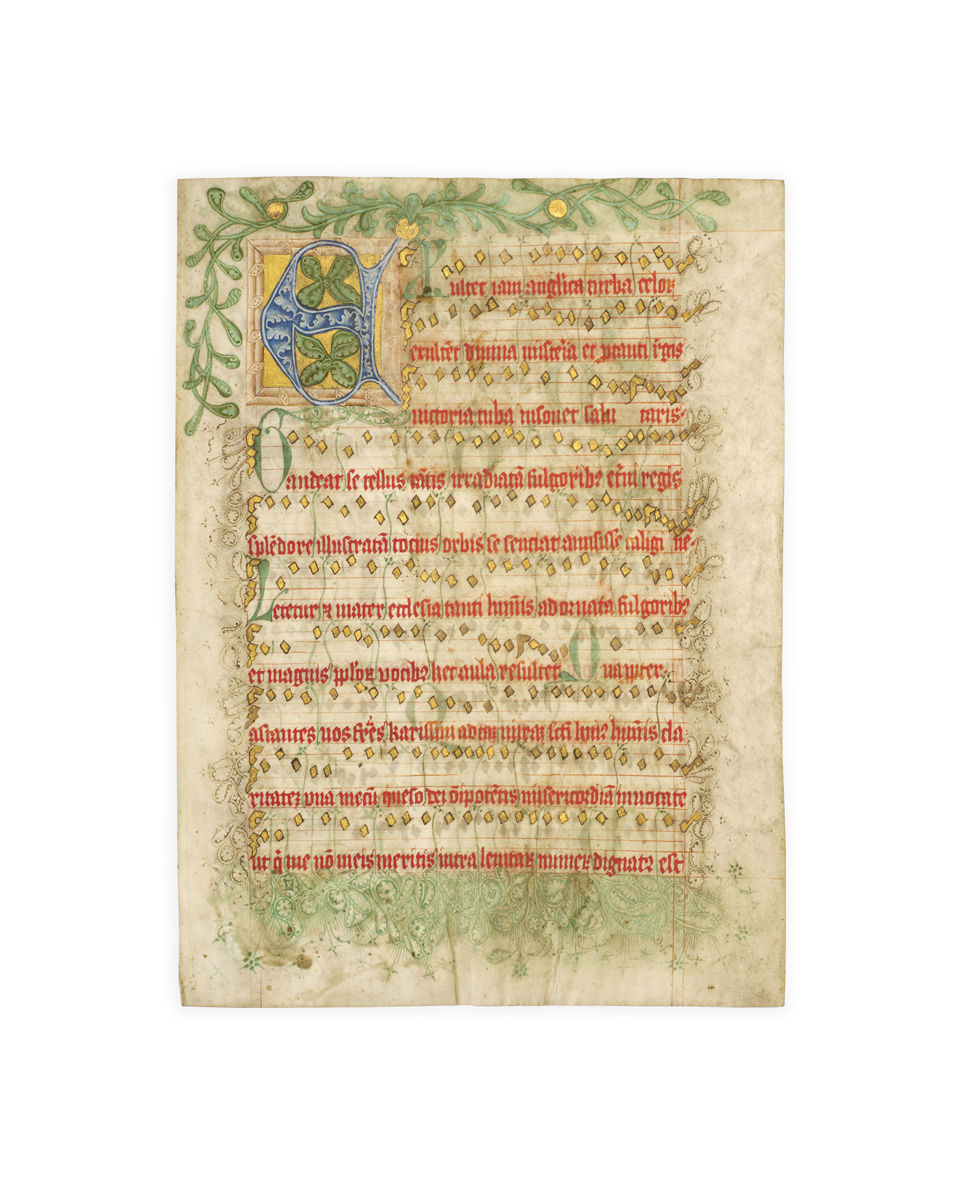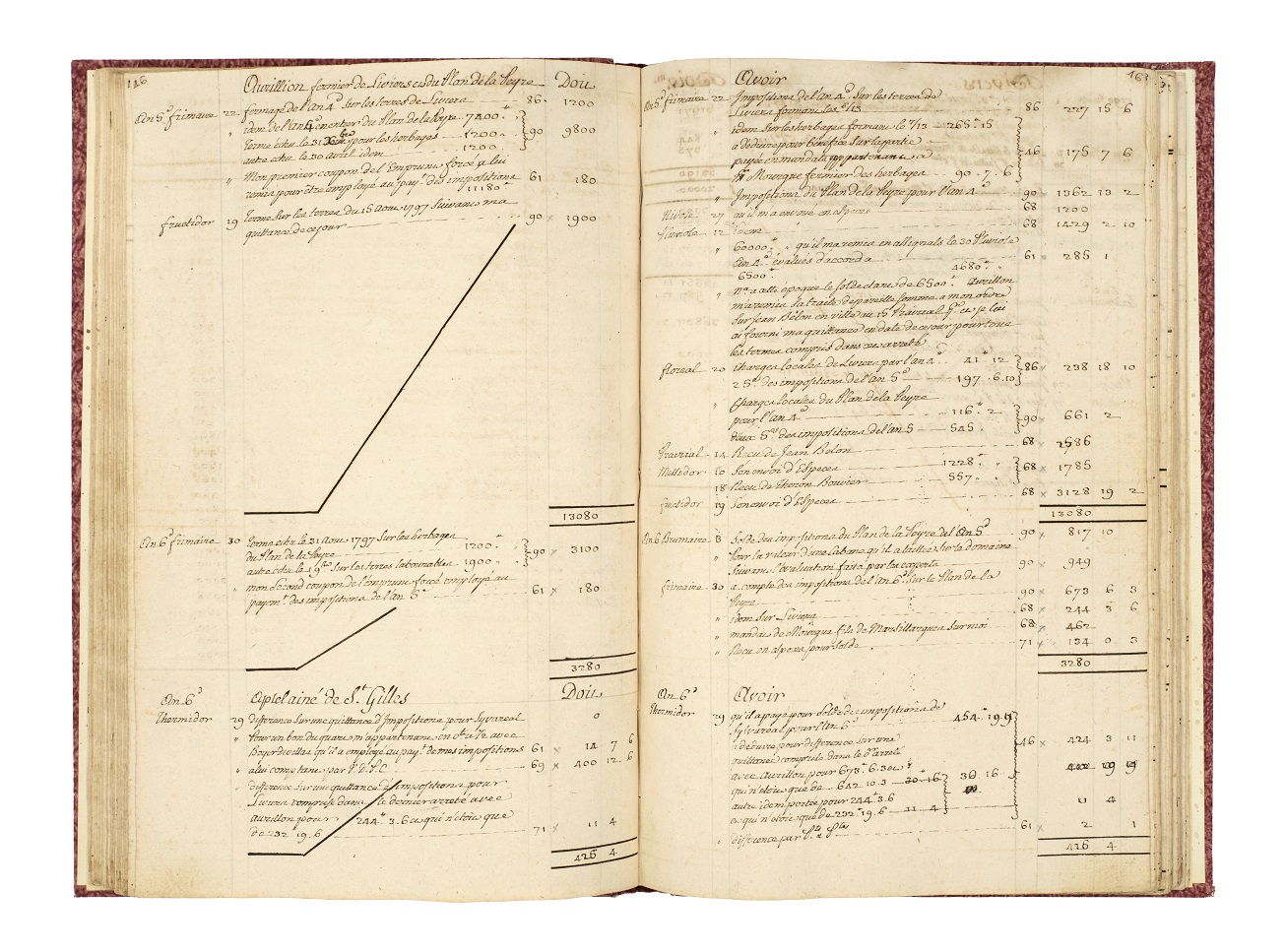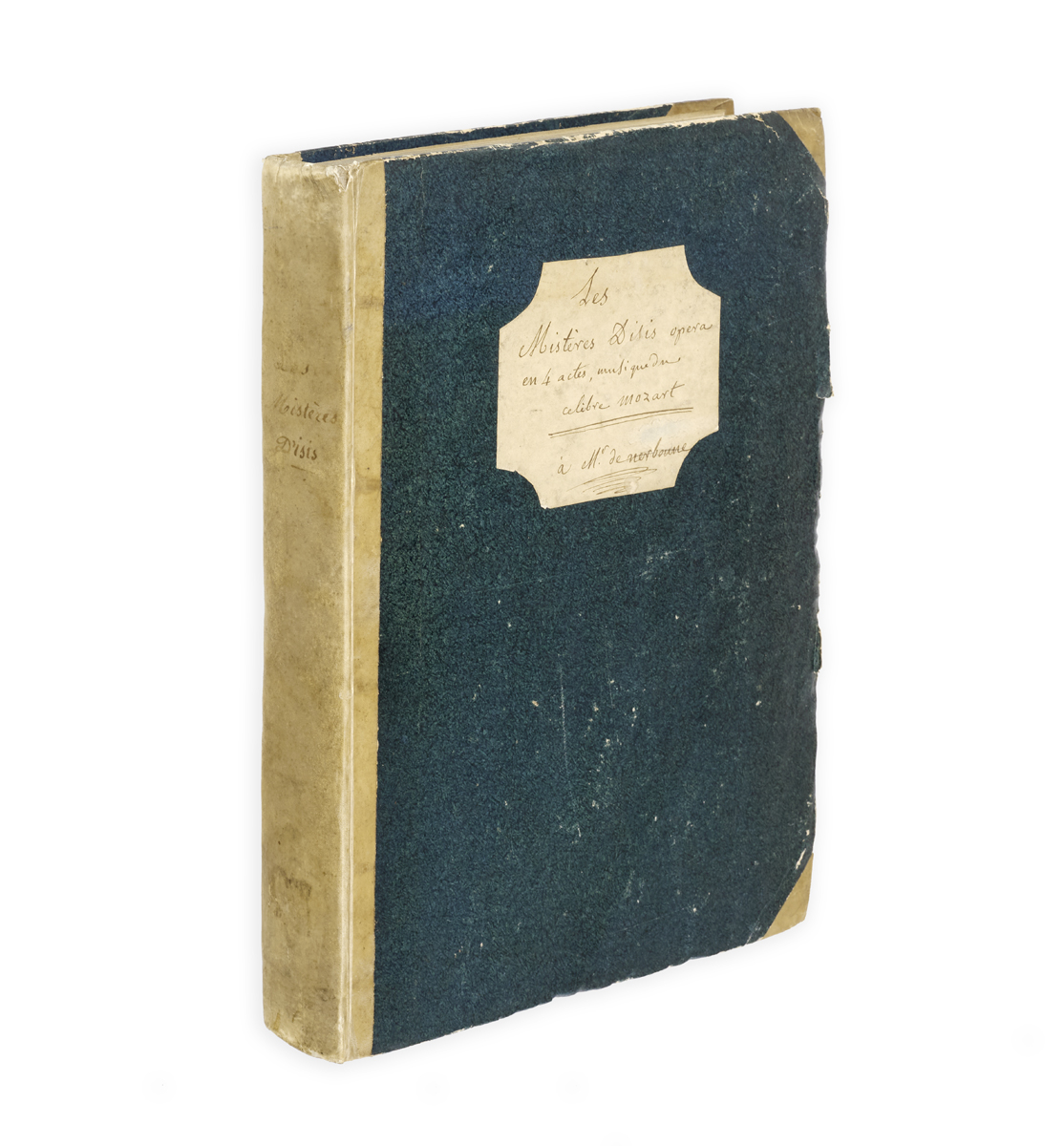
Golden Notes
ANTIPHONAL,
with neumes, containing music for the blessing of the Paschal Candle on Holy Saturday.
Southern Germany or Bohemia, mid-15th century.
A complete folio leaf (388 x 287 mm (text area 297 x 205 mm)), ten lines written in red ink in a gothic liturgical script, ruled in red ink, diamond-shaped musical notation entirely in burnished gold outlined in dark brown ink on ten four-line red staves, large illuminated initial ‘E’ (Exultet jam angelica, 78 x 74 mm) of blue leafy design set against a quadrangular panel of burnished and shell gold framed in pink and enclosing two leafy x-shaped motifs in green, border extension of green foliage enclosing burnished gold bezants, smaller initials in green ink, green ink dividers indicating the relationship of the notes to the words, extensive penwork flourishing in green ink in lower margin of recto and in both upper and lower margins of verso, penwork flourishing in brown ink along inner and outer margins of both recto and verso, rubrics; some light soiling and smudging but generally in excellent condition.

Added to your basket:
with neumes, containing music for the blessing of the Paschal Candle on Holy Saturday.
An unusual and striking antiphonal leaf written entirely in red and notated entirely in burnished gold, signalling the importance of the text for Holy Saturday.
The Exultet or Exsultet, also known as the praeconium paschale, is a hymn of praise sung by the deacon in celebration of the Resurrection after the Lumen Christi procession has entered the church for the solemn service of the Easter Vigil. It is sung in connection with the blessing and offering of the Paschal Candle, the light of which symbolizes the glory of the risen Christ. The burnished gold notes here may thus have served a practical as well as a symbolic and sacramental purpose, remaining visible to the deacon in the semi-darkness of the church.

